ODE TO ST. PIERRE
BY. Will Johnson
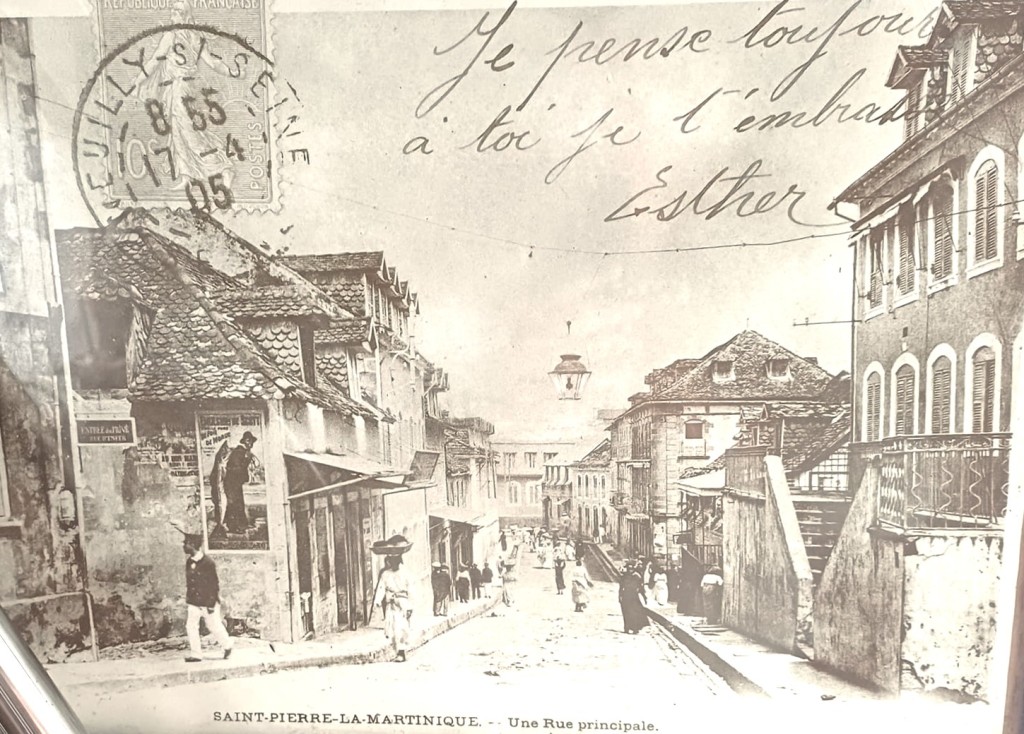
Ever since I was a young boy I was made aware of the catastrophe of May 8th, 1902 which erased that unique flower of a city called St. Pierre.
My grandmother Agnes Simmons used to tell me interesting tales about events which took place in her lifetime (1880-1962). There were times that I would overnight at the home of my grandparents. They lived in the village of Hell’s Gate next to the church. Hell’s Gate folk went to bed with the chickens. It was dark in those days. The neighboring islands were dark as well. From that same spot where my grandmother used to smoke her corncob pipe and tell me her stories, today the islands which we only used to see in the day are all lighted up. St. Martin, St. Barth’s, Statia, St. Kitts and Nevis. All look like Christmas trees on the near horizon. But when I was a boy you could only see one light in the harbor of St. Maarten .
Many people ask me where the name Hell’s Gate comes from. The village was also known as Zions Hill, but I never heard anyone call it by that name. Father Ramon the Roman Catholic priest seems to prefer Zions Hill. The road leading to Hell’s Gate was a bad one and had a bad reputation as well. Just a goat track cut out in the cliffs. It had sinister names, no longer used such as “The Negroes Sharped Their Knives”, probably referring to a slave rebellion, the “Clashing Ground”. The “Mares Fall” where Father Norbert de Groen and his horse went over the cliff. Both the priest and the mare survived. “Jacob’s Ladder” and to its foot was “The Devils Heater” and the “Devils Hand” . When the JEEP road was being built regrettably all of these landmarks disappeared. The one I thought the most r regrettable to have disappeared was the “Devils Hand”. It was as if a giant had his hand cased in cement. It was so perfect a handprint that it was hard to imagine that this was a natural phenomenon. To superstitious people it must have seemed like the road to hell. Many Sabans of that period were direct descendants of Scottish pirates, and by extension descendants of the Vikings. “Houlsgade” in the old Norse language, I am told means “The road to Hell.”
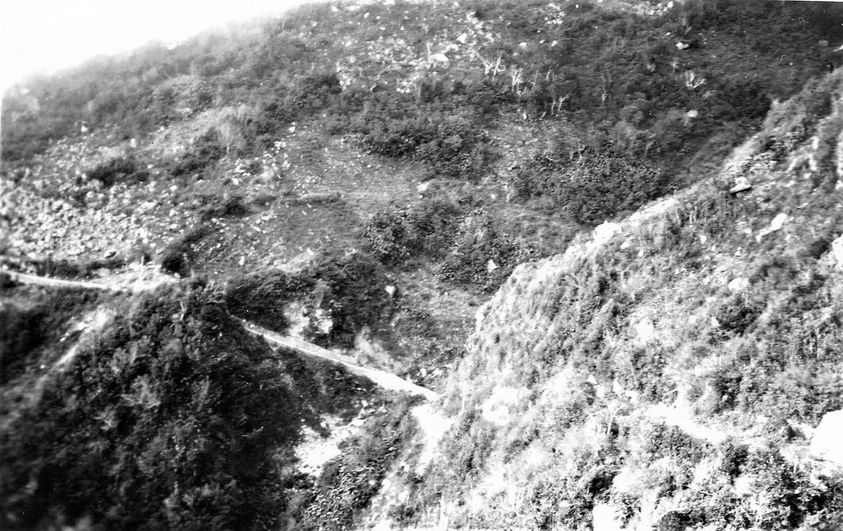
And after having ascended that part of the cliff known as “Jacob’s Ladder” one was so relieved to see a small Cluster of well-kept homes and gardens one must have thought to have passed through the gates of hell and landed into Zion. That is my interpretation. Anyone having a better one can try and beat mine.
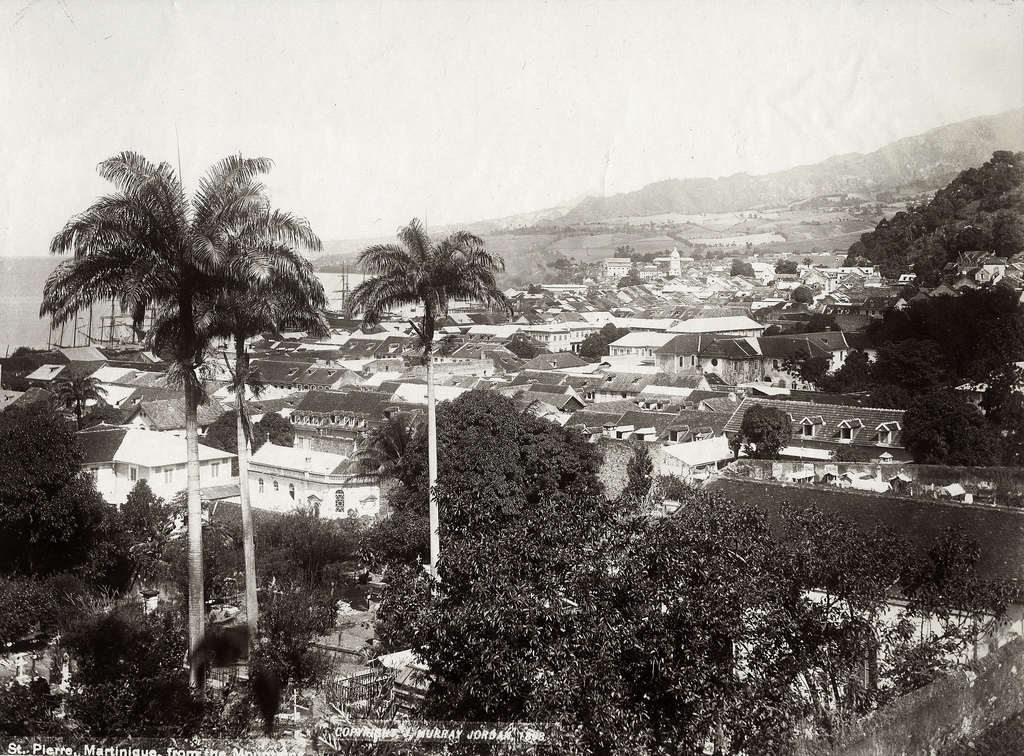
Anyway, at my grandmother’s house, after having put out the wood fire in the yard on which the Johnny cakes had been baked, and having lighted the kerosene lantern, it was story time.
My grandmother had many experiences on that spot, including the loss of her house and her eldest daughter Lura when a bolt of lightning struck. She had passed through several hurricanes, suffered hunger because of droughts and lost crops. Yet she spoke most often to me about the volcano Mt. Pelee which had erupted and took the lives of between 28.000 and 40.000 people in less than a minute. This happened on May 8th, 1902.
She recalled hearing two loud bangs. People in the village thought it was a Dutch Man-O-War in the harbour of Sint Eustatius firing off her cannnon. Other old timers told me that they ran to var ious lookout points to try and see what was going on. By late afternoon ash began to fall and the people concluded that an eruption had taken place on one of the islands.
Sabans were aware that Mt. Pelee was acting up. In those days Sabans had well over thirty large schooners which plied the trade throughout the West Indies and the Guyana,s . My great grandfather Thomas Johnson was a Captain, and he owned a schooner called the “Endeavour”. Many Saban schooners would have traded with that the loveliest of West Indian cities, St. Pierre. On that fateful day a Saban named John Hassell, a Mate on the schooner the R.J. Morse was engulfed in the inferno there and lost his life leaving a wife and four small children behind. One of them Volney Hassell, blind from birth, in his old age gave an interview to Dr.Julia Crane which is published in “Saba Silhouettes”. In that interview he describes his father’s death:
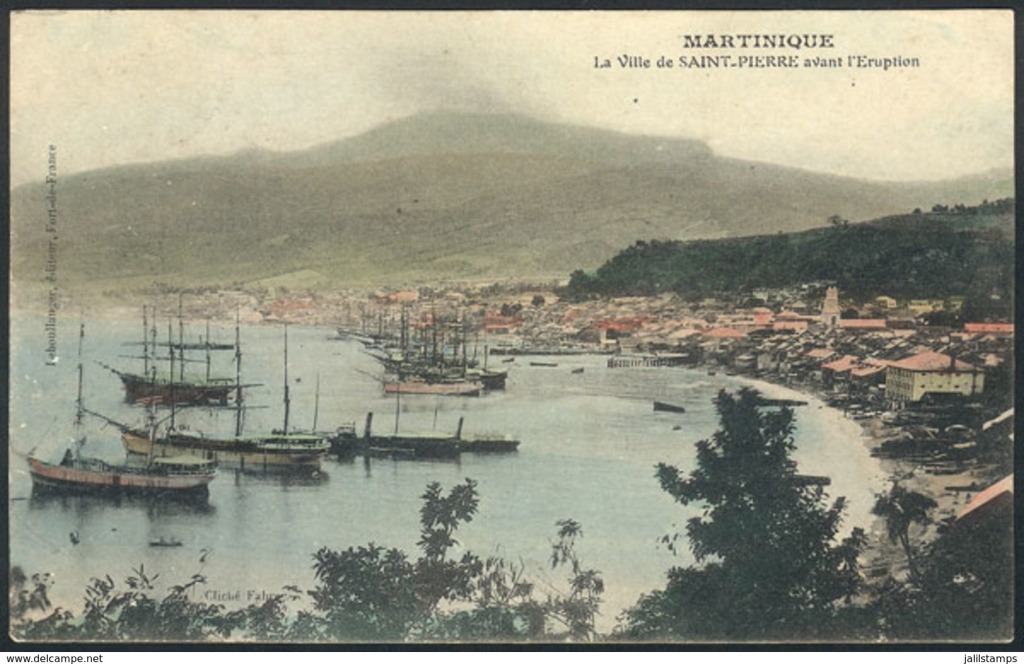
” Our father got blowed up into a eruption up there. He sailed out, you know, not no steamers, a schooner, from America, out to all the islands out here. And the accident happened into Martinique. Volcano. And, you know, they could see the smoke from down here – the lava in the air, yeah, and he was into that. Yeah, he was into the schooner. Well, the other schooners cleared out. It must be, what’s to be. All the other schooners cleared. But the one that he was on the captain wouldn’t go. He wouldn’t go and well, that’s what happened.”
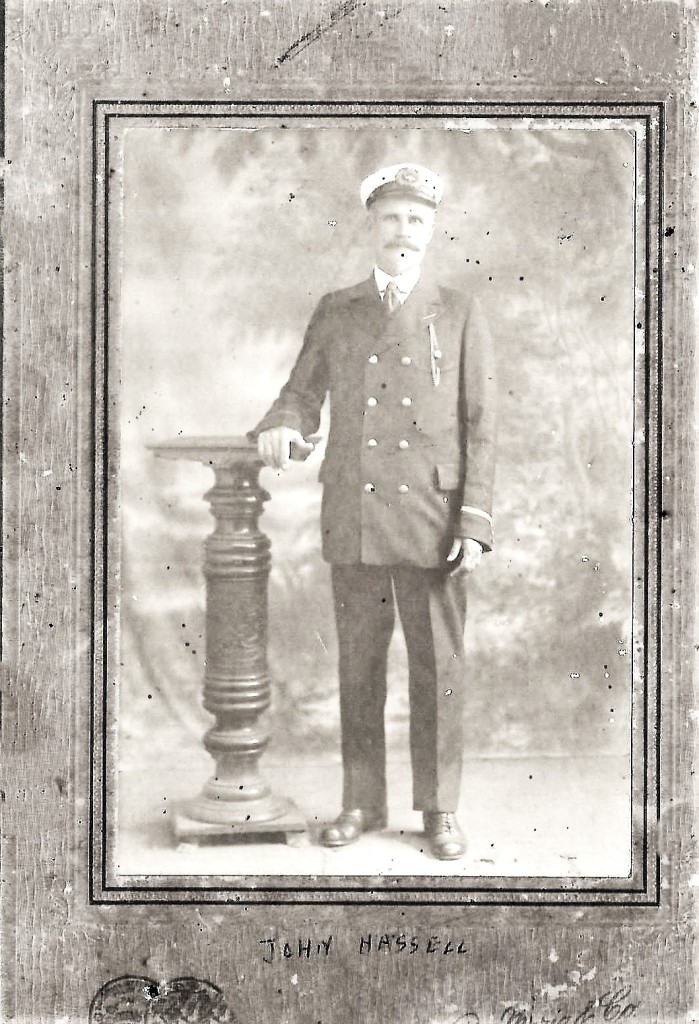
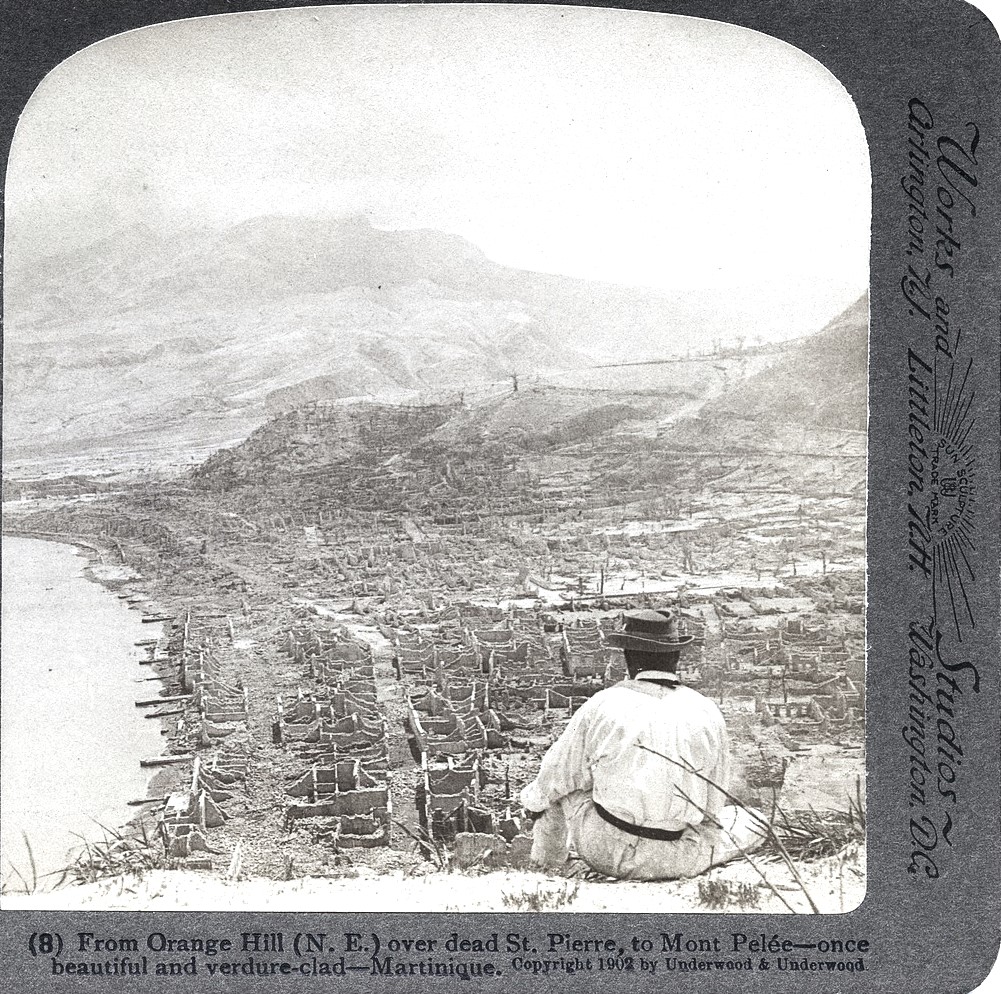
Mt. Pelee left its ashes on all the islands to the North. After its destruction of that cultural oasis St. Pierre it repented and its ashes fertilized the Northern Islands for decades to come. Now Montserrat has taken over the role of Mt. Pelee.
So much has been written of this tragedy that we will suffice with quoting from a few writers on the subject. I have visited St. Pierre on three occasions, looking around, collecting shards and bricks and other memorabilia. Over the years I have tried through research to visualize what St. Pierre the living city must have been like in its glory days. The writer Lafcadio Hearn paid a glowing tribute to the city in his book “Two Years in the French West Indies”. Frederick Ober in “Camps of the Caribees” visited there as well. Alec Waugh in “The Coloured Countries” said the following about St. Pierre.
“No place that I have ever seen has moved me in quite that way. Not so much by the thought of the twenty-eight thousand people killed within that narrow span. It is the knowledge rather that here existed a life that should be existing still, that existed nowhere else, that was the outcome of a combination of circumstances that now have vanished from the world forever. Even Pompeii cannot give you quite that feeling. There were many Pompeii’s after all. Pompeii exists for us as a symbol, as an explanation of Roman culture. It has not that personal, that localized appeal of a flower that has blossomed once, only in one place: that no eye will ever see again.”
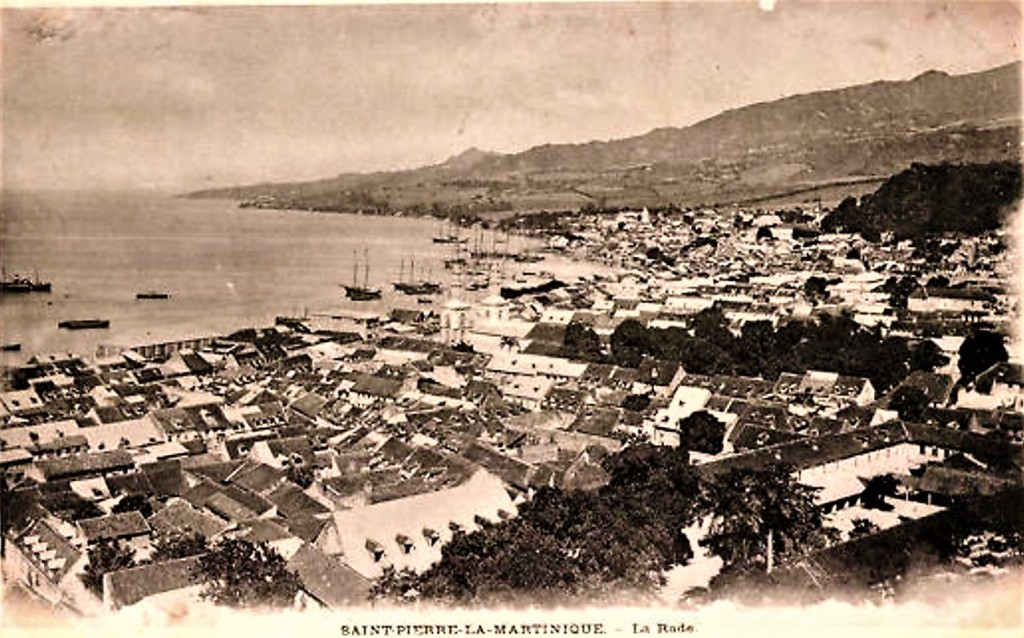
” The culture of Versaille was transported there to mingle with the Carib stock and the dark mysteries of imported Africa. Saint Pierre was never seen without emotion. It laid hold of the imagination. It had something to say, not only to the romantic intellectual like Hearn or Stacpool, but to the sailors and the traders, to all those whom the routine of livelihood brought within the limit of its way. “Incomparable” they would say as they waved farewell to the “Pays de Revenants”, knowing that if they did not return they would carry all their lives a regret for it in their hearts. History has no parallel for Saint Pierre. And within forty-five seconds the stir and colour of that life had been wiped out.” Even though there is a new town now in that amphitheater which once housed a unique flower called St. Pierre, one has a deep sense of loss and a silent scream cries out for the city that was.
Lafcadio Hearn had predicted her demise. Saint Pierre was the loveliest city in the West Indies. The loveliest and the gayest.
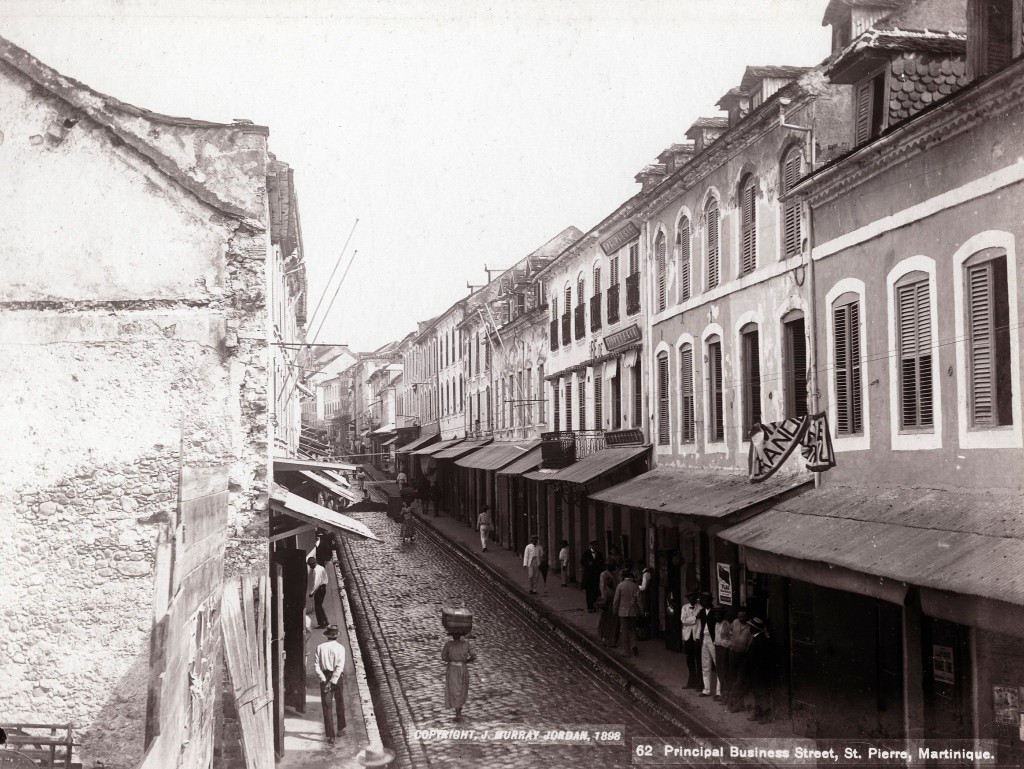
All day its narrow streets were bright with colour; in sharp anglings of light the amber sunshine streamed over the red tiled roofs, the lemon-coloured walls, the green shutters, the green verandahs. The streets ran steeply, “breaking into steps as streams break into waterfalls” Moss grew between the stones. In the runnel was the sound of water. There was no such thing as silence in St. Pierre. There was always the sound of water, of fountains in the hidden gardens, of rainwater in the runnels, and through the music of that water, the water that kept the town cool during the long noon heat, came ceaselessly from the hills beyond, the murmur of the lizards and the cricket. A lovely city, with its theater, the lamplit avenues, its Jardin de plants, its schooners circle wise along the harbour.
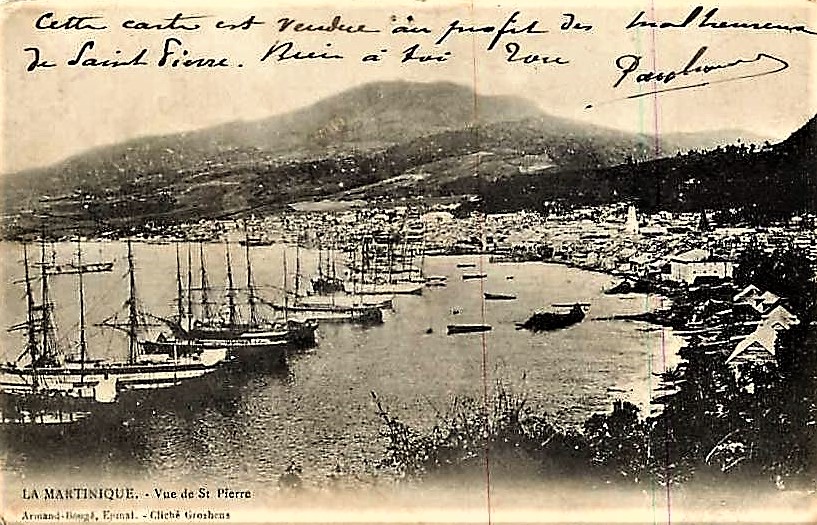
Life was comely there; the life that had been built up by the old French emigres. It was a city of Carnival. There was a culture there; a love of art among those people who had made their homes there, who had come to Martinique to make money that they could spend in Paris.
Young Josephine must have travelled from her home in Trois Islets to a ball or two in the city.
Frederick Ober in 1889 had the following to say about St. Pierre; ” A second time I sailed into the bay of St. Pierre, a second time loked upon the volcano rising above it. The town is about a mile in length, straggling at the North away down the coast, ending in scattered villages; and at one place where a river makes a break in the cliffs, creeping up towards the mountains.
” A narrow belt between the high cliffs and the sea, built into and under them; the houses of stone and brick, covered with brown earthen tiles, tier upon tier, climbing up to the hills. With the soft mellow tints of the tiles; the grays of the walls, the frequent clumps of tamarind and mango and with the magnificent wall of living green, St. Pierre strikes one as a beautiiful town.
“The streets are narrow but well flagged, and at every few squares is a fountain; and adown the gutters through them all run swift streams, carrying to the sea the refuse of the city. St. Pierre is the commercial port of the island, and there are many stores filled with the wines and wares of France. There are a fine Cathedral; a theater of large capacity, to which for three months each winter a troupe from Paris draw crowded houses; a bishops palace and governor’s residence, with large and handsome barracks for the troops.”
Lafcadio Hearn lovingly described the city and daily life there and the “porteuses” who supplied the city with its daily needs from the surrounding vilages and farms.
As he left St. Pierre for the last time he wrote: ” Farewell, fair city, -sun-kissed city, many fountained city/dear yellow-glimmering streets, white pavements learned by heart, – and faces ever looked for, and voices ever loved! Farewell, white towers with your golden throated bells!- farewell, green steeps, bathed in the light of summer everlasting! craters with your coronet of forest!- bright mountain paths up winding ‘neath pomp of fern and angelin and featherin bamboo!- and gracious palms that browse above the dead! Farewell, sof-shadowing majesty of valleys unfolding to the sun, – green golden canefields ripening to the sea.’.
Hearn describes the wind after sunset as his ship dparted the harbour: ” Perhaps some such breeze, blowing from Indian waters, might have inspired that prophecy of Islam concerning the Wind Of The Last Day, that “Yellow Wind, softer than silk, balmier than musk, ” – which is to sweep the spirits of the just to God in the great Winnowing of Souls.”
Just a few years later the great winnowing of the souls of St. Pierre took place when that yellow wind swept off the mountain and cosumed the city in 45 seconds.
Hearn further predicted… ” Some day there may be a great change in the little city of St. Pierre; there may be less money and less zeal and less rememberance of the lost. Then from the morne, over the bulwark, the green host will move down unopposed; creepers will prepare the way, disocating the pretty tombs, pulling away the checkered tiling; then will come the giants rooting deeper, -feeling for the dust of the hearts, groping among the bones;- and all that love has hidden away shall be restored to Nature, -absorbed into the rich juices of her verdure, – revitalized in her upliftings of emerald and gold to the great sun.”
” Fascinated as I have always been with the story of St. Pierre, On May 2nd, while on a visit to Florida it came to me in a dream. Once again like Lafcadio Hearn I was wandering the streets of the city admiring the fountain and the lively hustle and bustle. The dream stayed with me, and I recalled my second visit to the Museum there. Across the street there was a small grocery. I walked in with my youngest son to buy him a soft drink.
After I was served, an ancient lady came shuffling out of the back of the store and looked at me with the most penetrating look one could imagine. My blood ran cold. In French Creole she said, “You have returned.” She then went to the back of the store mumbling to herself. The lady at the counter looked amused. She said “My grandmother says she has something for you, just wait a minute. When she returned, she gave me an old postcard, a large blown-up version. She continued staring at me and said” “She would be so happy to know that you returned.” I stuck the old postcard in a folder that I had just purchased thinking that she must be senile. Her granddaughter smiled and said: “She thinks she knows you from when she was a young girl. She must be twice your age. Perhaps you look like someone she knew.”
I forgot about the postcard in the folder after I left to return to my ship. Months later I found it again. It was adressed to no one. The view on the front showed a busy street in the city and the glory of St. Pierre. The message simply read: Je pense toujours a toi. Je t’embrasse. Esther.”
The card was dated April 17th, 1895.
Who was this Esther and who did the old lady thnk I was. On my last trip to St. Pierre I could not resist going across the street from the Museum. The lady behind the counter recognized me right away. She said to me: Grandmother passed on shortly after you left. It seemed that her sole mission in life was to deliver that old card. Grandmother said to tell you if you returned that Esther survived the eruption as she had been visiting friends in Fort de France and had taken ill there. Esther always thought you would return, and she did not die until some years ago.” We both agreed that the grandmother must have mistaken me for someone in her past. Ever since that time I have a novel floating around in my head which I will put on paper hopefully soon.
In the book “The Day after Their World ended” by Gordon Thomas and Max Morgan-Witts, they give an account of the final days of St. Pierre.
On Thursday May 8th at 8.03 am, the silent scream of more than 30.000 souls went into the ages when the upper flank of the mountain facing South, opened up. An eyewitness in a distant village, Suzette Laveniere, described the final moments as follows.
” From the gap, at least three hundred feet wide and possibly as deep, came a stupendous roar, forcing a second black cloud to roll out in huge whorls. It mushroomed upward, forming an even blacker umbrella of darkness. This cloud roared down toward St. Pierre, tumbling over and over. One moment it would clutch at the ground, the next it would rise perhaps a hundred feet before falling back to the earth again.
It seemed to be a living thing, glowing all the time, while from its center burst explosions that sent lightning like scintillations high into the darkness. In less than a minute it had joined the first fireball which had demolished St. Pierre, they merged to blot out everything and certainly to kill all they touched. The whole city was in flames. “
And so one hundred years later, we say in the words of Lafcadio Hearn: Farewell, fair city, sun-kissed city, -many fountained city – and faces we looked for – and voices ever loved!”
And farewell to Esther of yesteryears dreams. Je pense toujours a toi. Je t’embrasse.
Will Johnson, Saba May 8th, 2002
